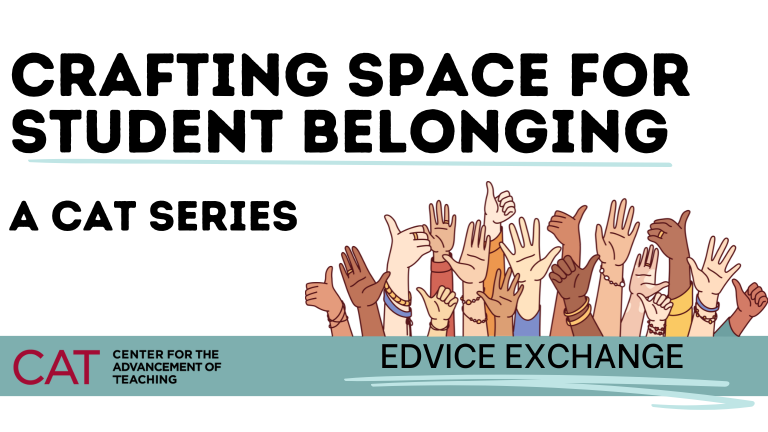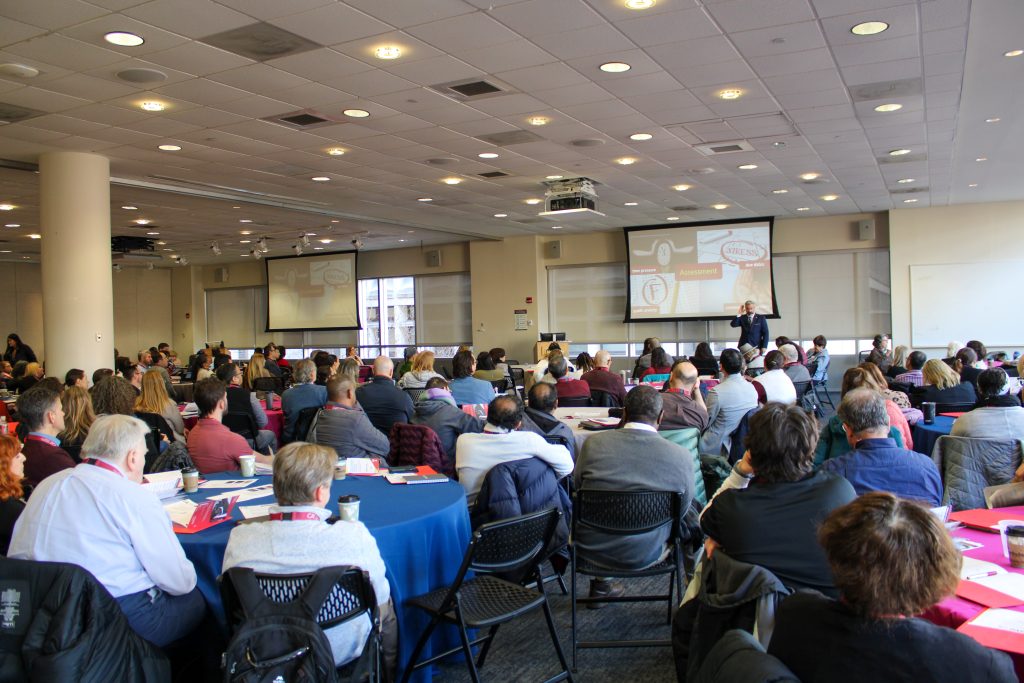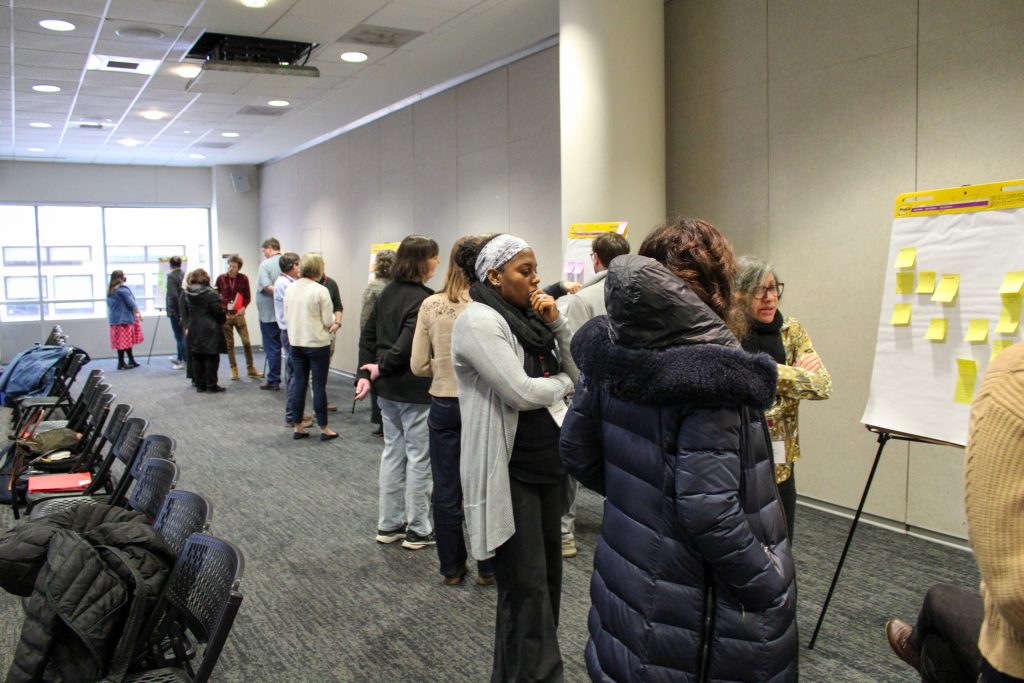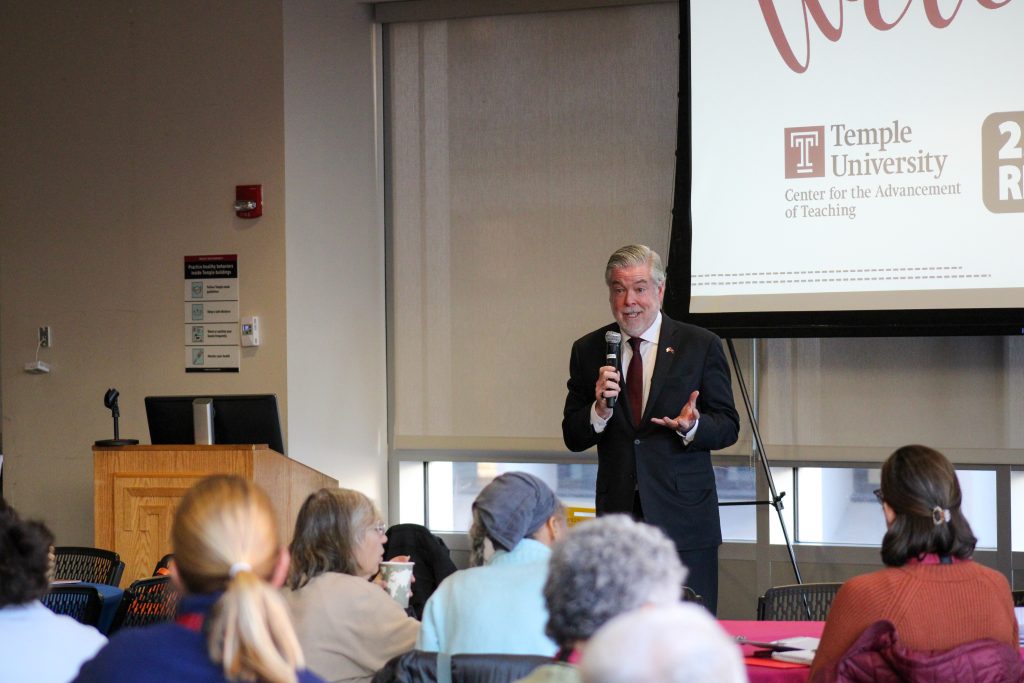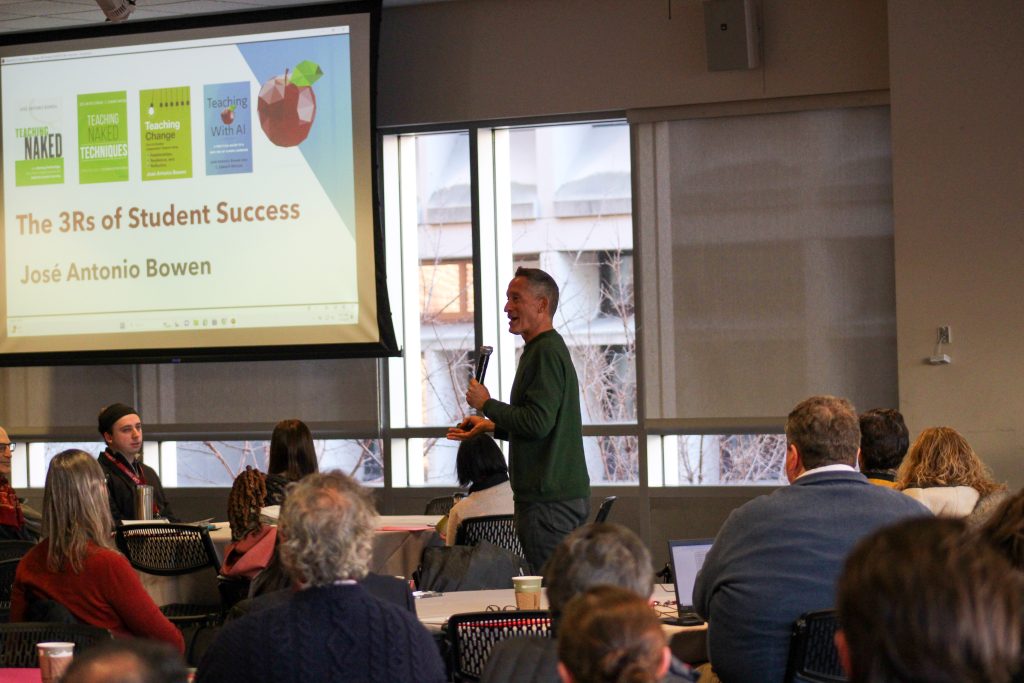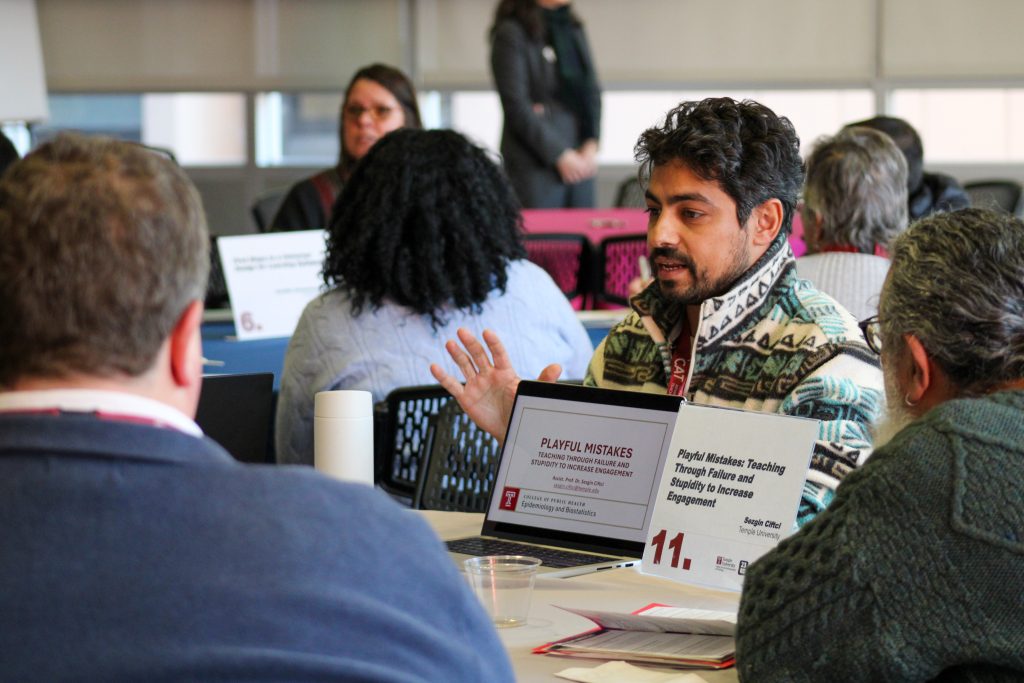Jeff Rients and Stephanie Fiore

The end of the semester is the perfect time to take stock of what worked in our classes this year and also explore thoughts we might have about any challenges we may have faced.
A fruitful area to reflect on is how we can use assessments and grading to grow student learning. Our guest speaker for the CAT’s annual STEM Educators’ Lecture on April 8 provided some ideas for thinking about this exact topic. Dr. Robert Talbert, professor of mathematics at Grand Valley State University and one of the authors of Grading For Growth: A Guide to Alternative Grading Practices That Promote Authentic Learning and Student Engagement in Higher Education helped faculty think deeply about the sometimes fraught relationship between grading and assessment.
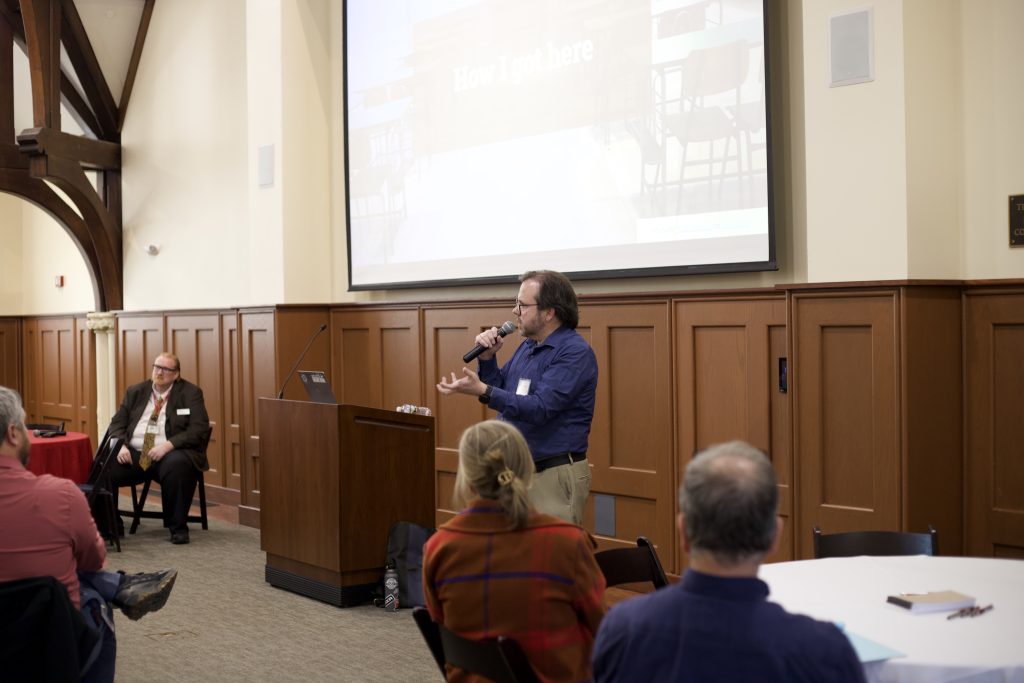
Dr. Talbert’s talk began with an overview of the history of grading in higher education, focusing on its relative newness to higher education and its role primarily as an administrative/ bureaucratic tool, as opposed to a mechanism for improving student learning. In short, the grading scheme we are all familiar with–certain student behaviors earn them grades which in term yield a final grade for purposes of calculating a grade point average–developed during the 19th century movement of settlers into America’s West as a way of allowing students to transfer credits from one school to another in a growing United States.
Assessment, on the other hand, focuses on observing student performance in comparison to some goal or standard and providing the student with the feedback needed to improve the performance. Dr. Talbert’s work argues that we need to do less grading and more assessment in our classrooms. Grading for Growth outlines multiple strategies to achieve this goal, and Dr. Talbert walked us through his own specific approach that he uses with his mathematics students.
Ultimately, a work like Grading for Growth and a lecture like Dr. Talbert’s is never going to provide us with all the answers we need to improve our course so that more of our students succeed. There are no one-size-fits-all solutions in higher education, as the context of the individual course, the individual instructor, and the individual student will always be requisite pieces of the puzzle. As much as we at the CAT love the “alternate assessment” framework Talbert uses, every instructor is ultimately responsible for making an assessment plan that fits their specific situation.
Grading for Growth strikes us as the kind of book that will do a lot of good in a lot of classrooms. But what matters more is that whatever assessment plan we use should be developed and deployed with thoughtful intentionality. This approach works equally well for every aspect of our teaching. If we want to be the best instructors we can be, then it’s wise to stop and consider questions such as
-
-
-
- Is my assessment plan measuring student progress towards the learning goals of the course?
- Am I providing students with the feedback they need to improve?
- Am I providing the students with sufficient opportunities to practice tasks and receive feedback?
- Do my course materials and lectures give students the context and background needed to approach the required tasks thoughtfully?
- Do my in-class activities provide practice for the tasks they will perform for assessment purposes?
- Do the students have the resources they need when they get stuck, and do they know how to access them?
-
-
The end of the semester is the perfect time to take a few minutes to reflect on these questions. Jot your thoughts down as to what worked and what didn’t work. Outline what you might change going forward or what about the course you need to discuss with a colleague (or a CAT staffer!). Make sure you record these important thoughts somewhere you can easily find them. That way, when you find yourself at the end of the summer and ready to start prepping for fall, you will thank your past self for helping you make next fall your best semester yet.
We at the CAT want to remind you that we are here all summer to assist you and that you can find an electronic copy of Dr. Talbert’s book in the Temple library. But if we don’t see you until August, we wish you a wonderfully restful and restorative summer and look forward to seeing you in the new academic year.
Jeff Rients, Ph.D., is Associate Director of Teaching and Learning Innovation at Temple University’s Center for the Advancement of Teaching.
Stephanie Laggini Fiore, Ph.D., is Associate Vice Provost and Senior Direct of Temple University’s Center for the Advancement of Teaching.
